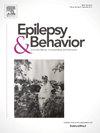0-17岁儿童服用斯利潘托后发生的不良事件:对真实世界药物警戒数据库的分析。
IF 2.3
3区 医学
Q2 BEHAVIORAL SCIENCES
引用次数: 0
摘要
目的分析在真实的临床环境中,0-17 岁儿童使用斯利潘托 (STP) 后发生的相关药物不良事件 (ADE):从世界卫生组织全球病例安全病理报告数据库(VigiBase)、美国食品和药物管理局自发不良事件报告系统数据库(FAERS)以及欧洲药品管理局药物警戒数据库(Eudra Vigilance)收集0-17岁儿童使用斯的平的ADE报告。通过报告几率比(ROR)和比例报告比(PRR)确定药物警戒信号:共报告了 31,990 例 ADE,其中 "斯利潘托 "为主要可疑药物。其中 595 例 ADE 来自 Eudra Vigilance,1,353 例 ADE 来自 FAERS,998 例 ADE 来自 VigiBase。这三个数据库均显示,与 STP 相关的 ADE 发生率较高的类别包括神经系统疾病、全身疾病和用药部位状况、损伤、中毒和手术并发症,以及代谢和营养紊乱。3-11 岁儿童的报告比例较高(16.48 %-32.44 %)。FAERS 数据显示,小脑萎缩(PRR 为 332.94,ROR 为 532.10)是 0-2 岁儿童的最强信号,而癫痫发作表现变化(PRR 为 110.76,ROR 为 121.06)是 3-11 岁儿童的最强信号。对于 12-17 岁的儿童来说,癫痫发作(PRR 为 46.99,ROR 为 47.40)和食欲下降(PRR 为 45.51,ROR 为 45.96)是最强烈的信号。Eudra Vigilance 的结果显示,在 0-17 岁的儿童中,男孩在检查、血液和淋巴系统疾病、肝胆疾 病、感染和侵袭方面的 ADE 高于女孩。另一方面,在皮肤和皮下组织疾病、损伤、中毒和手术并发症、全身疾病和用药部位状况以及胃肠道疾病方面,女孩的 ADE 高于男孩:在儿科 STP 的临床应用中,重要的是检查神经系统疾病、损伤、中毒和手术并发症、全身疾病和给药部位条件以及代谢和营养失调的 ADE。进一步的研究应确认不同 ADE 是否存在年龄和性别差异。本文章由计算机程序翻译,如有差异,请以英文原文为准。
Adverse events associated with Stiripentol in children aged 0–17 years: An analysis of a real-world pharmacovigilance database
Objective
To analyze the occurrence of adverse drug events (ADEs) associated with Stiripentol (STP) use in children aged 0–17 years in real-world clinical settings. Methods:ADE reports on STP in children aged 0–17 years were collected from the WHO Global Case Safety Pathology Reporting Database (VigiBase), the U.S. Food and Drug Administration’s Spontaneous Adverse Event Reporting System database (FAERS), and the European Medicines Agency’s Pharmacovigilance database (Eudra Vigilance). Pharmacovigilance signals were identified through Reporting Odds Ratio (ROR), and Proportional Reporting Ratio (PRR).
Results
In total, 31,990 ADEs were reported with “Stiripentol” as the primary suspect drug. This includes 595 ADEs from the Eudra Vigilance, 1,353 ADEs from the FAERS, and 998 ADEs from the VigiBase. All three databases indicate a higher incidence of ADEs related to STP in the categories of nervous system disorders, general disorders and administration site conditions, injury, poisoning and procedural complications, and metabolism and nutrition disorders. A higher proportion of children aged 3–11 years reported (16.48 %–32.44 %). The FAERS data shows that cerebellar atrophy (PRR of 332.94, ROR of 532.10) is the strongest signal for children aged 0–2 years, while changes in seizure presentation (PRR of 110.76, ROR of 121.06) is the strongest signal for children aged 3–11 years. For children aged 12–17 years, seizures (PRR of 46.99, ROR of 47.40) and decreased appetite(PRR of 45.51, ROR of 45.96) are the strongest signals. The Eudra Vigilance results show that boys have higher ADEs than girls for investigations, blood and lymphatic system disorders, hepatobiliary disorders, infections and infestations in children aged 0–17 years. On the other hand, girls have higher ADEs than boys for skin and subcutaneous tissue disorders, injury, poisoning and procedural complications, general disorders and administration site conditions, and gastrointestinal disorders.
Conclusion
In the clinical application of STP in pediatrics, it is important to examine ADEs in Nervous system disorders, Injury, poisoning and procedural complications, General disorders and administration site conditions, and Metabolism and nutrition disorders. Further studies should confirm whether there are age and gender differences in different ADEs.
求助全文
通过发布文献求助,成功后即可免费获取论文全文。
去求助
来源期刊

Epilepsy & Behavior
医学-行为科学
CiteScore
5.40
自引率
15.40%
发文量
385
审稿时长
43 days
期刊介绍:
Epilepsy & Behavior is the fastest-growing international journal uniquely devoted to the rapid dissemination of the most current information available on the behavioral aspects of seizures and epilepsy.
Epilepsy & Behavior presents original peer-reviewed articles based on laboratory and clinical research. Topics are drawn from a variety of fields, including clinical neurology, neurosurgery, neuropsychiatry, neuropsychology, neurophysiology, neuropharmacology, and neuroimaging.
From September 2012 Epilepsy & Behavior stopped accepting Case Reports for publication in the journal. From this date authors who submit to Epilepsy & Behavior will be offered a transfer or asked to resubmit their Case Reports to its new sister journal, Epilepsy & Behavior Case Reports.
 求助内容:
求助内容: 应助结果提醒方式:
应助结果提醒方式:


